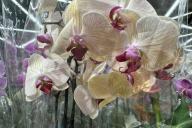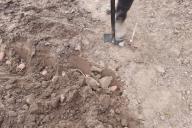Spring is a wonderful time for gardeners and flower growers.
This is the time when nature awakens from hibernation, when the first leaves and flowers appear, when you can start working on your plot and create beautiful flower beds.
But what flowers should be planted in the spring so that they take root well and please the eye with their bloom? What varieties and species are suitable for spring planting?
What planting methods to use? How to care for plants after planting, says Anastasia Kovrizhnykh .
We will try to answer these and other questions, as well as give you some useful tips and recommendations on choosing and planting flowers in the spring.

Examples of flower seed types sown directly into the soil
Sweet pea plant has a climbing habit, gives off a pleasant smell, will work as a background for other plants. In order for it to be able to reveal its beauty, it requires supports.
Maciejka tradional, a rural species, planted in garden plots, as well as in pots on the windowsill, exudes a beautiful scent, especially in the evening. It is worth planting it in places often visited by people, near windows, gazebos, patios.
Cosmos is a very delicate species, it is well suited for rural, rustic compositions. It looks perfect in combination with other species.
The garden sunflower, a species that cannot be missing in any garden due to its size, will be visible from afar. It attracts insects, especially hard-working bees and beautiful butterflies.
Calendula edible species, whose flowers are orange, are edible and we can successfully use them for experiments in the kitchen. In addition, calendula repels nematodes, i.e. plant pests.
The garden mallow plant has funnel-shaped flowers with a velvety sheen; they will look beautiful planted along a fence or hedge.
Marigolds are a plant that repels moles, nematodes, ants or aphids with its characteristic smell. That is why it is worth having them in your garden. They can also be grown from seedlings.
Zinnia is a species whose flowers, depending on the variety, have different colors: pink, white, yellow, red. Everyone will find something for themselves, in addition, they are suitable for cut flowers.
Nasturtium is a plant that is planted on balconies, terraces, and in the garden. Its spreading, compact habit looks beautiful on borders. It has orange flowers that are edible. Nasturtiums attract aphids, so planting them between vegetables protects them from these pests, because they are guided only by nasturtium.
Remember that the seeds that we sow directly into the ground have free access to the sun's rays, so that the earth is at least slightly warmed by them.
When sowing seeds, we can choose seeding, row sowing, random sowing or spot sowing. When deciding on row sowing, it is easier for us to estimate which species will sprout.
Mixing species and varieties makes it difficult for each other to grow because they start growing too densely. Then a procedure of interruption is needed, otherwise not all of them will survive. Therefore, having chosen the sowing, we must subsequently control their germination.
Sowing seeds depends on their size, the larger they are, the deeper we sow them. The sowing depth is usually described on the package. After sowing the seeds, we cover them with soil and knead them slightly. After that, we water the sowing site generously.
Examples of flower seed types sown from seedlings
A garden variety of petunia that is very often used for hanging planters. Its overhanging habit can decorate the place near windows and doors.
A Mexican plant with blue, pink and white flowers depending on the variety. It will work in a sunny and fairly humid location.
Chinese aster is a species whose flowers have a variety of colors. It lasts a very long time in a vase, so you can use it in bouquets.
Celosia is a species with beautiful pink flowers and dark green leaves. It blooms for a long time and even when the flowers are already fading, it looks attractive.
Leuconia annua is a species that is very often used in bouquets. Its flowers are delicate and will add elegance to our flower beds.
Pyrethrum is a species that resembles a large daisy to the point of confusion. It has a compact habit, looks beautiful in the company of other plants, and loves sunny places.
After drying, its flowers are used for plant compositions in the form of wreaths, garlands or bouquets.
Growing plants from seedlings can be more labor-intensive, but it can produce much better quality specimens.
In addition, it is an ideal way if we focus on species that have a long germination period and are sensitive to low temperatures.
This type of sowing involves sowing seeds in multi-pots, boxes or frames at the very beginning. Containers with seedlings are kept in a greenhouse or even on a house window.
They need to be kept moist by constant sprinkling and ventilation so that air can circulate. Then, when they start to sprout and grow until the leaves start to touch, they should be quilted.
That is, transplant them into larger containers with greater distances so that they can grow freely.
Before planting in a permanent place, it is good to harden our plants, i.e. first put them outside for several hours to avoid the so-called “plant shock” after planting.
It is best to plant specimens in mid-May after the last frosts. Do not forget to do this carefully, before planting, strengthen the substrate well with multi-syntactic mineral fertilizer so that the plants have all the micro- and macroelements for further growth and the release of beautiful, decorative flowers.
Don't forget to prepare well for sowing seeds. In addition to the seeds themselves, we need a good quality substrate.
This can be ready-made soil purchased in a store or a substrate that we have fortified with fertilizers.
Pots for seedlings or other containers are also necessary if we decide to sow seedlings. A spatula or a hole-maker, which makes it easier for us to make holes, a rake and a watering can will also come in handy.
Try to do all gardening work with clean and disinfected equipment, and it is better to protect your hands with gloves.
Earlier we wrote about what you need to know about planting seedlings .









